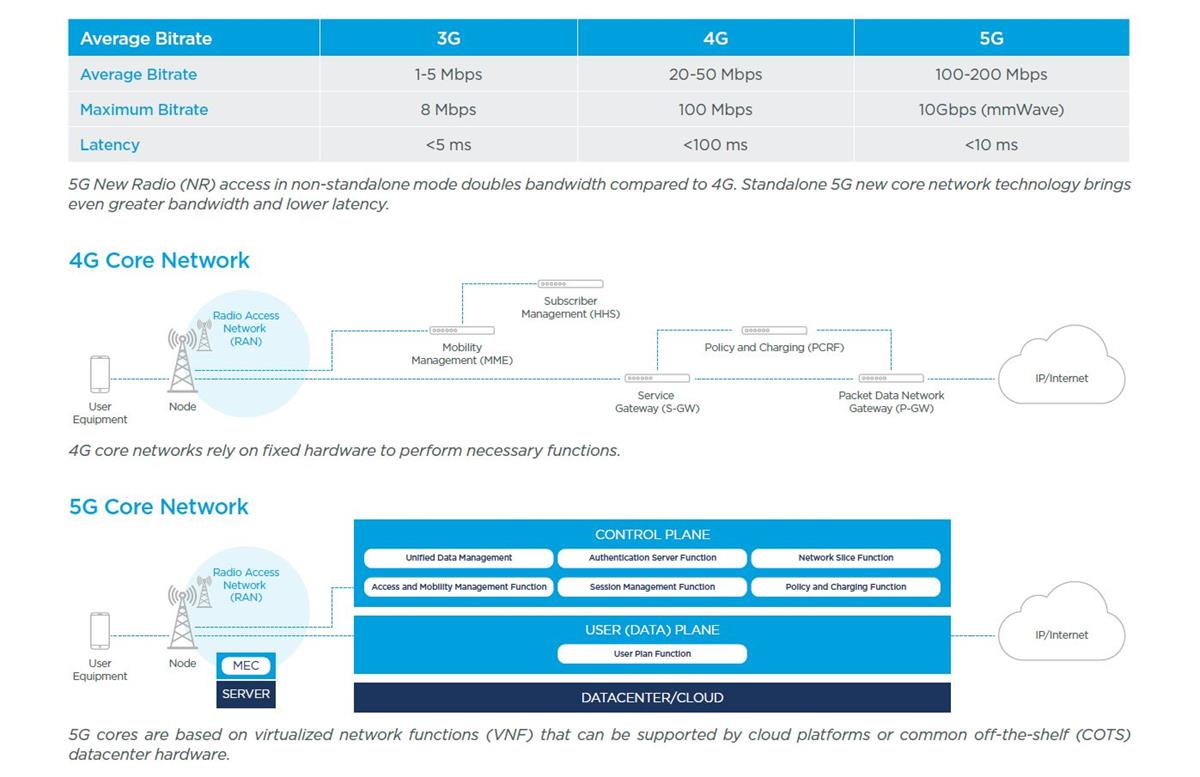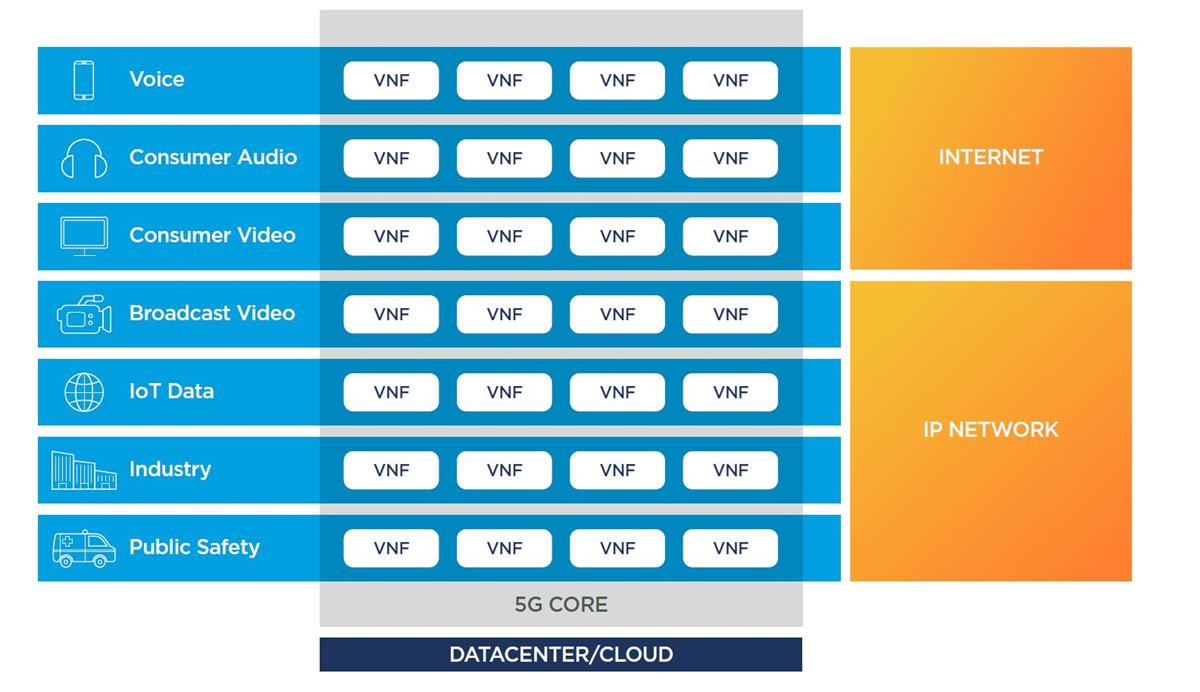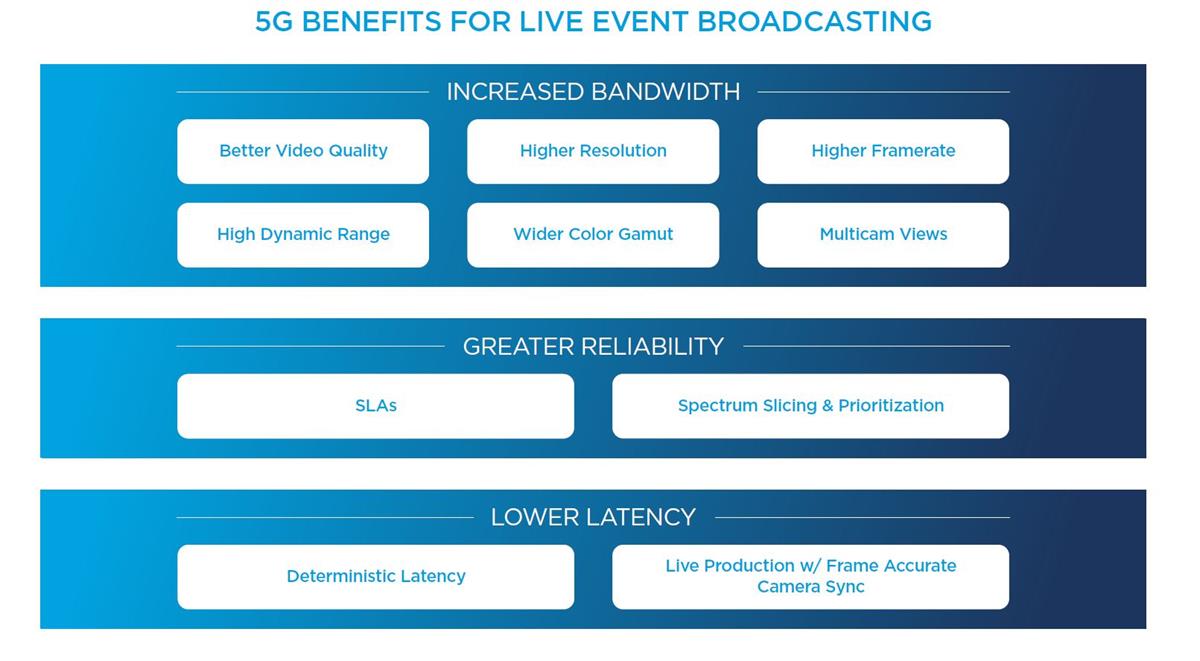
READ MORE: Unlocking the Potential of 5G for Live Broadcast Production (Haivision)
READ MORE: 5G and the future of live event broadcasting (Verizon)
5G is more than just a simple improvement on 4G — it’s a radical new departure for mobile data networking and computing.
That’s what network operator Verizon and video encoding technology vendor Haivision share in a pair of separate reports.
As 5G advances its rollout, the game-changing applications for streaming and broadcast are on the verge of being realized.
According to Haivision’s survey of more than 650 broadcast professionals from across the globe, 68% agreed that 5G will completely change the way broadcast television is produced.
The introduction of 5G New Radio (NR) technology, with its much wider range of frequencies that include mmWave, offers better connectivity to many more devices, dramatically lower latency, and huge amounts of bandwidth.
This will have indirect effects for remote production, streaming, news gathering, and the consumer experience of live events.

In the white paper, Haivision explains that 5G NR differs from 4G in that it relies on a larger network of smaller antennas to receive and transmit data over higher frequencies. Where 4G or LTE (long-term evolution) technology relied on radio frequency bands that were all below 6GHz, 5G NR can support much higher bands up to 40GHz.
“5G Core technology represents a radical departure from the past that will enable a host of innovations, many yet unforeseen,” Haivision states.
Unlike previous generations of cellular network technologies such as 3G and 4G, 5G core networks rely on virtualized and cloud-based technology running on commercial off-the-shelf (COTS) hardware instead of having dedicated hardware for specific functions such as data transmission, routing, and service management. Mobile network functions are no longer tied to dedicated pieces of equipment and are instead offered as either virtualized network functions (VNF) or cloud-native functions (CNF).
VNF is software that runs as a virtual machine on top of any common hardware platform. CNF takes it one step further and containerize network functions to operate on cloud-based platforms.

“A cloud-native 5G core will give them the ability to spin services up and down and introduce new offerings aimed at specific applications such as broadcast production,” Haivision reports.
In particular, broadcasters can apply network slicing to carve out a temporary dedicated piece of the 5G bandwidth in a local area over which to transmit reliable streams of 4K and higher quality video live.
“For broadcasters, 5G network slicing promises the same benefits of using dedicated fiber or a private IP network without the associated fixed costs and physical limitations. Because 5G network slices are mobile services, they will become as readily available and accessible as internet services but with greater reliability including service level agreements, lower latency, and more bandwidth.”
5G mmWave can reach up to 500 meters when deployed as a private network in place, making it well suited for covering large areas like stadiums. This can support bitrates of 10Gbps or higher, making it well suited for cable-free camera connections to broadcast equipment including switches and encoders. And because 5G mmWave operates at such high frequencies, between 24GHz and 40GHz, latency can be as low as four meters.
Haivision also points to the cloud computing resources which can also be deployed across a 5G radio access network to dramatically reduce latency.
Referred to as multi-access edge computing (MEC), this technology enables anyone with access to a 5G network to process video and any other type of data near to wherever they happen to be located.

“Once 5G MEC services are deployed, broadcasters will no longer have to carry truckloads of video processing equipment, nor will they have to contend with latency challenges involved with centralized workflows and cloud computing.
“MEC will deliver huge amounts of processing power at extremely low and practically non-existent latency levels which broadcasters will literally be able to access from the air.”
Verizon is one of those operators leading the charge into 5G with a focus on professional video applications.
It focuses on the transformation shift in infrastructure required to broadcast live — from banks of on-site mobile facilities uploading signals via satellite, to leaner one-person producer-journalists able to report live from anywhere.

“We’re shifting toward a more mobile, more nimble kind of journalism,” John Pavlik, a professor of Journalism and Media Studies at Rutgers University, says in the Verizon report. “The media can respond more quickly and be where the stories are happening, whether it’s sports or an Emmy Awards ceremony or breaking news.”
Although TV stations may still want to use a truck in some cases, Pavlik says, for many live situations, they might deploy one- or two-person teams equipped with devices that connect directly to public 5G networks.
This could help reduce production costs by up to 90%, according to mobile network industry group GSMA. The technology can also simplify broadcast productions.
READ MORE: How 5G lowers the barriers for live broadcasts (GSMA)
Pavlik comments that this could lower the cost of newsgathering overall, making 5G a potential boon for local journalism, which often faces budget constraints that can impact coverage.
Changing Viewer Experiences
For big events, 5G enables more complex coverage. While fans get the excitement of a shared live experience, when connected to the mobile network they can also use 5G-enabled devices to toggle between an array of additional perspectives and content.
At the 2022 Indianapolis 500, for example, connected fans with 5G-capable devices and the official INDYCAR app could customize the way they watched the race by choosing from among seven real-time angles of the race — the main broadcast plus six others. It was made possible by Verizon’s 5G Ultra Wideband, available in select areas, and 5G Multi-View for those at the venue.
READ MORE: Indianapolis 500 fans get closer than ever to the action thanks to Verizon 5G Ultra Wideband (Verizon)
At the same time, fans watching from home could get their own immersive experience of the race through an AR portal powered on the back end by 5G called Verizon 5G Ultra Pass. The portal provided 360-degree views and exclusive camera angles.

Casting ahead, Verizon imagines broadcasters can create an even more immersive experience for viewers.
“People like to customize things,” Pavlik says. “I watch the concert from this side, you watch it from that side. It’s still the concert, but I experienced it a little differently.”
As the technology evolves, Verizon says it’s likely that viewers will increasingly be able to choose their own version of a live event, with an individualized viewpoint, whether they watch in their living room or attend an event with thousands of other people.


